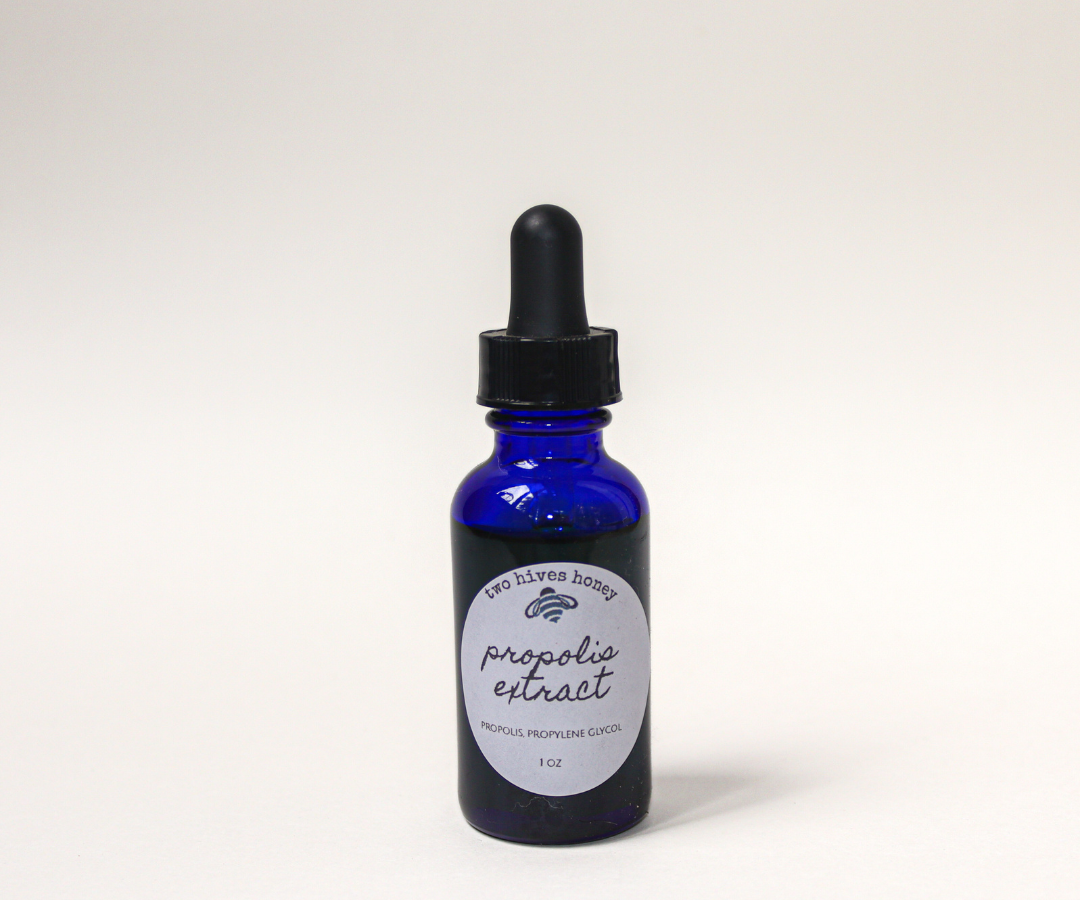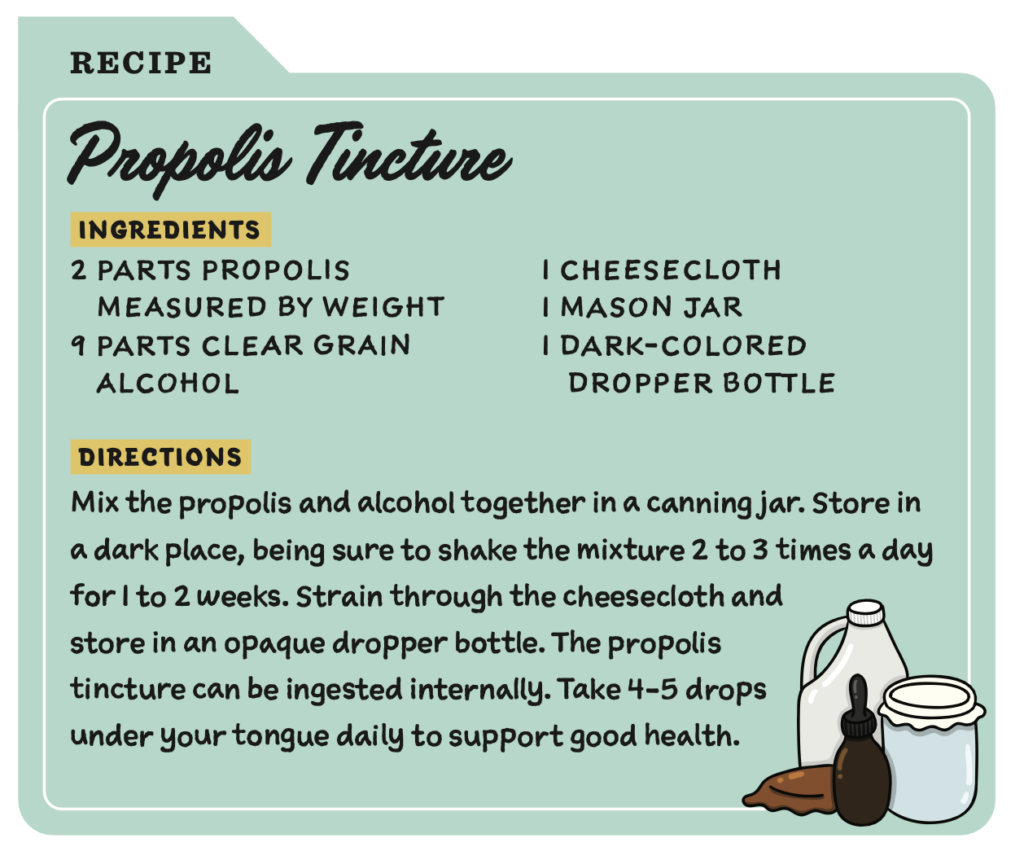The Power of Propolis in a Colony

We all talk a lot about the beneficial properties of honey, but arguably another product of the hive brings even more benefits: propolis. I love harvesting and using propolis even more than honey (ok that may be a lie..let’s call it a tie.)
Honey bees gather resins from the sap of trees and other botanical sources, carry it back to the hive in their pollen baskets, and mix it with saliva, beeswax, and honey to create what beekeepers call propolis, or bee glue. Honey bees use this propolis to seal up all small cracks in the hive, fill in rough surfaces, and waterproof it from rain and the elements. And because propolis is antibacterial and antiviral, it may help protect the colony from pathogens too.
Bees also use propolis to mummify intruders. If another insect (or even a mouse!) invades a hive, the bees can act quickly to kill it. But some predators are too big for tiny bees to carry back out, so they wrap the deceased intruder in propolis to keep the dead body from contaminating the colony. Honey bees also line the beeswax cells with propolis before each generation of eggs is laid in the comb to help protect the developing brood from disease. Propolis can be harvested by the beekeeper and is used in formulations for colds, treatments for burns and wounds, and toothpastes and mouthwashes to treat gingivitis.
Studies have found that propolis is an antibacterial, antiviral, and anti- inflammatory agent. It’s frequently used in products intended to fight colds and sore throats as well as promote healing from minor cuts or burns. It also is used in skincare formulations.
It’s easy to harvest propolis. Propolis traps can be found at beekeeping supply stores, but I’ve found the easiest and best time to harvest is just after the winter dearth. There will be lots of areas in the hive where the bees have added propolis to keep out the cold, often around the entrance and in gaps between hive bodies. Simply use a hive tool to scrape the propolis that is sealing up the entrance of the hive, place it in a container, and store it at room temperature until you have enough to make propolis products.
And if you’re new to the world or propolis here is a recipe on how to make your own propolis tincture.

Looking for more recipes for propolis and other products of the hive? Be sure to grab a copy of my new book! Available on our website and Amazon.
If you want to further explore propolis, check our my online class on harvesting and using propolis! Or, if want to buy ready made products, you can find our own propolis tincture and propolis throat spray on our website!



Leave a Reply